ساندویچی غریب از چیزهای معمولی
یادداشتی به بهانه سخنرانی جنیفر بانر در کانون معماران معاصر
علیرضا تغابنی
مجاورت اتاق خواب با کلاس درس، در رمان کافکا، از قرارگیری چرخ خیاطی روی میز اتاق عمل عجیبتر است.
میلان کوندرا
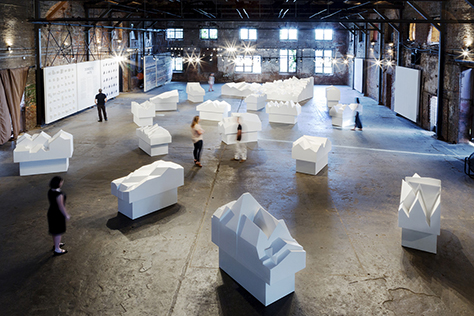
کارهای جنیفر باونر را به نوعی میتوان ادامه نگاه به فرهنگ عامه، و تامل در پیشپاافتادگی و معمولیبودن یا حتی کیچبودن این فرهنگ دانست. در آثار باونر میبینیم که چگونه دقیقشدن در مسئلهای عام و نورانداختن بر این مسئله ـ که از شدت معمولیبودن، گویی نامرئی شده ـ اول آن را به ابژه تفکر تبدیل میکند، و بعد با رویکردی محققانه و تحلیلی، در روندی مرحلهبهمرحله و پلهپله، چیزی جدیتر و چندلایهتر از آن میسازد، مسئلهای با درجاتی از شگفتی. نگریستن به زندگی روزمره و کشف معانی، خصوصیات و امکانات آن، رویکردی بود که از پس گرایشهای نخبهگرایانه مدرنیستی، پا به عرصه گذاشت، گرایشهایی که تلقیشان از اثر هنری چیزی بود که فقط در دایره فهم گروهی خاص میگنجد. در این نگرش پسامدرن، تفکر و تحلیل «امر روزمره»، پیشپاافتاده دانسته نمیشد. به عبارتی، موضوع تفکر دیگر ضرورتا چیزی مهم یا عظیم یا عمیق نبود و کوچکترین مباحث اجتماعی و عارضههای فرهنگی هم میتوانست موضوع تحلیلهای جدی قرار گیرد.
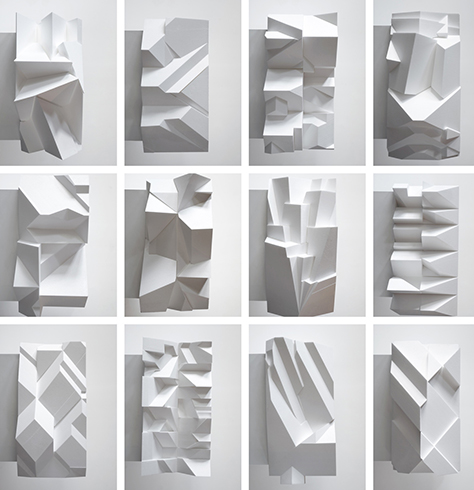
نگاه باونر بهروشنی نزدیکیهایی با پاپآرت دارد. پاپآرت نیز نگاهی جستجوگر به زندگی روزمره دارد، و هنر را از قله نخبهگرایانهاش به زیر میکشد و با جدا کردن شیء یا موضوع از فضای روزمره، آن را قاببندی و کادره، و در نتیجه، آماده تامل میکند. با این حال، آنچه آثار باونر را از پاپآرت متفاوت میسازد، این است که برای باونر، قاببندی و نگاه به مسئله پیشپاافتاده، صرفا نقطه عزیمت و شروع روندی طولانی و محققانه است؛ انگار جایی که پاپآرت به پایان میرسد، کار باونر تازه شروع میشود.
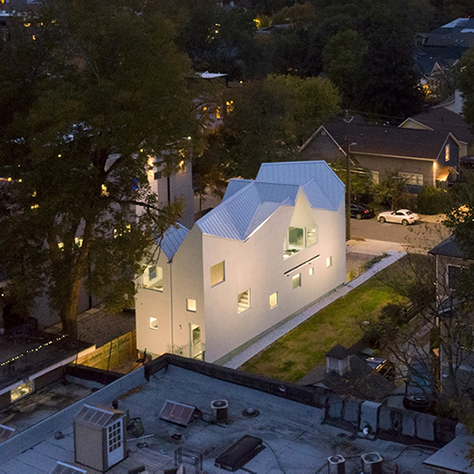
پروژههای باونر از جهات دیگری، با «معمولی»ها یا پیشپاافتادهها در کارهای اسکات براون و ونتوری خویشاوند است. موضوع تامل در آثار اسکات براون و ونتوری، شیوههای مرسوم ساختوساز و نشانههایی است که معماری عامهپسند تولید میکند، اما باونر علیرغم این خویشاوندی، فاصله موضعگیرانهاش را با نوع تحقیق و معماری اسکات براون و ونتوری حفظ میکند؛ این فاصله از رویکرد «کانسپچوالآرت»گونه باونر به این تحقیقات نشات میگیرد. به عبارت دیگر، اثر باونر در ادامه، به سلسلهای طولانی از تحقیق و بازتولید موضوع تبدیل میشود، بهطوری که انگار آنچه ونتوری «اردک» مینامید، در آثار باونر، پس از جدال طولانی و درگیری با انواع دفرمیشنهای تکتونیکی و متریالی، به موجودی تبدیل میشود با کروموزومی سراسر متفاوت، که هرچند شباهتهایی با «اردک» در جهان مُثل افلاطونی دارد، همزمان، همچون یک بیگانه، از آن جهان جدا میشود و موجودیت یکهای برای خود دست و پا میکند.
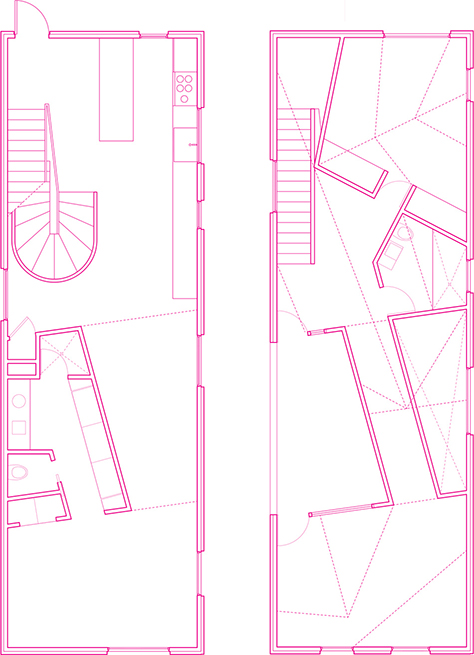
اگر روایت اسکات براون و ونتوری از «امر روزمره»، روایتی سرراست، کنایهآمیز و خوشمزه برای مصرف است که میتوان برای فرار از انتزاع مدرنیستی، از آن بهره جست و به داستانی برای روایتکردن رسید، و اگر خوانش کولهاس از «امر روزمره» در نیویورک، تبارشناسانه، عملگرایانه و گونهشناسانه است و کولهاس برای درسگرفتن از سازماندهیهای فضایی کلاژگونه، از آنها بهره میگیرد، نگاه باونر، روایت یک هنرمند کانسپچوال/صنعتگر عملگراست که وضعیت/مسئله را زیر میکروسکوپ میبرد تا با دخل و تصرفی طولانی و کِشتوکار چندساله بر آن، دارویی جدید خلق کند، دارویی که فارغ از ارزشهای معمارانه و تکتونیکیاش، در دنیایی که هر لحظه، عرصه را بر معماری متفکرانه، تنگتر و کوتاهتر میکند، راهحلی برای نفوذ یا حتی حضور در دنیای واقعیتهای ساختمانی و آبجکتهای معماری مییابد. اگر در روش اسکات براون و ونتوری، نشانه است که مورد تحلیل قرار میگیرد، و در نگاه کولهاس، سازماندهیهای مقطع و پلان، در روش باونر، زندگی روزمره بیرونیترین لایه مورد مطالعه را تشکیل میدهد، و شکل و متریال، موضوع مشاهده هستند، موضوعی که در نقش یک موتور برای دستکاری در پلانها و سازماندهیهای داخلی پروژه عمل میکند.
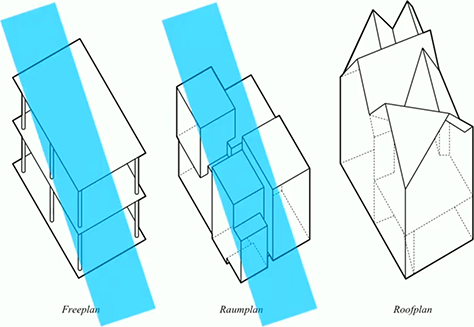
در جای دیگر، باونر خود در یک دیاگرام، شیوه رسیدنش به آبجکت معماری را با شیوه کار ویلا ساوا و رامپلان مقایسه میکند؛ اگر در ویلا ساوا، تکنولوژی تیر و ستون، و ایدئولوژی دموکراتیزهکردن مدرنیستی است که فضا را ساماندهی میکند تا در فضای داخلی با نوعی یکسانسازی ارزشهای فضایی مواجه شویم، و اگر در رامپلان آدولف لوس، نوع گردشگاه و سازماندهی فضایی و زندگی درونی، به شکلی معکوس، فرم بیرونی را شکل میدهد، در آثار باونر، مسئله پوسته و تحقیق بر روندهای «معمولی» ساخت پوستههاست که در فضای داخلی، نوعی فضامندی تصادفی به وجود میآورد. خود او به همین دلیل، از اصطلاح «لانهکردن» استفاده میکند؛ گویی انعکاس پوسته بیرونی در داخل، امکانها و احتمالهایی برای فضای داخلی ایجاد میکند که عملکردها میتوانند درون آنها جا بگیرند.
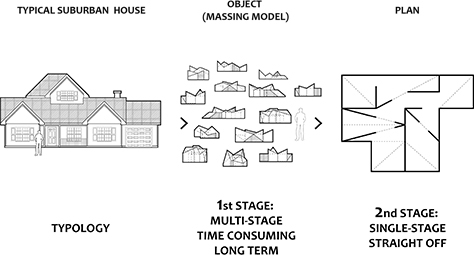
میتوان گفت که سفر معماری باونر در پروژه، به این صورت اتفاق میافتد: امر روزمره (مثلا سقف شیبدار) در مرحله طولانی مشاهده، تحقیق، تحلیل و کاتالوگسازیهای کانسپتی، به تدریج، به چیزی غیر از خودش تبدیل، و امکانات و پتانسیلهایش آزموده میشود. آنچه از این مرحله زمانبر حاصل میشود، در مرحله دوم، با پروجکتکردن خود و تحمیل هندسه و تکتونیکش به فضای داخلی، سازماندهیهای فضاییای ایجاد میکند که قطعا گسستی بنیادی با «امر روزمره» و پلانها و مقاطع عرفی و عام دارد. هرچه مرحله اول، هم از لحاظ زمانی و هم از لحاظ مراحل کار، ذرهذره و تدریجی است، مرحله دوم، یعنی پروجکشن پوسته به داخل بنا، یکباره، غافلگیرانه و رادیکال رخ میدهد. بدینترتیب، اثر با نوعی آشنازدایی بنیادین، خود را از همسنخانش متمایز میکند و فضاهایی غریبتر با درجاتی از تصادفیبودن به ارمغان میآورد.
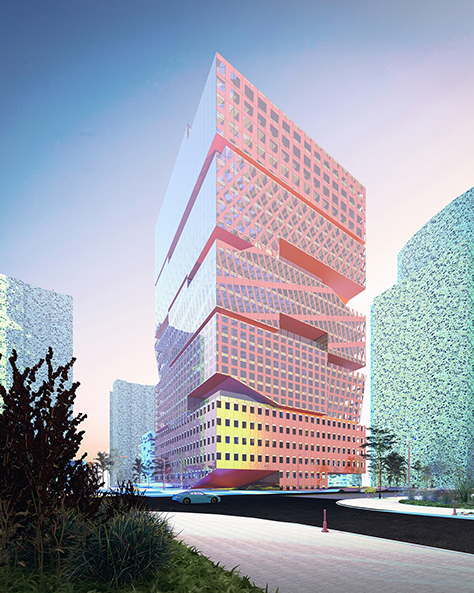
در پروژههایی مثل ویلا یا ساختمان مسکونی، به دلیل آزادی عمل بیشتر باونر، پروجکتشدن مسئله پوسته به داخل بنا، تمام و کمال اتفاق میافتد، اما در پروژههایی مثل ساختمانهای اداری ساندویچی، مقتضیات هسته سازهای میانی و احتمالا کدهای ساختوساز قدری دستوپای باونر را میبندد، و در نتیجه، تغییر و تحولات کمتری را در سازماندهی داخلی شاهدیم. باونر در اینگونه بناها، همچنان درگیر روشهای معمول ساماندهی داخلی است و صرفا به ایجاد تراسهایی در گوشهها و خردهوویدهایی در داخل بسنده میکند.
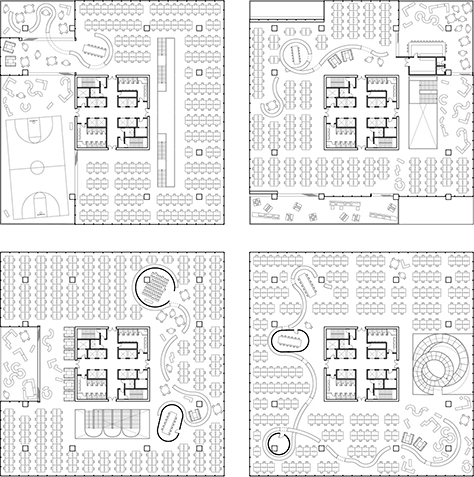
The proximity of the bedroom to the classroom in Kafka’s novel is more bizarre than the placement of a sewing machine on the operating room table.
Milan Kundera
Jennifer Bonner’s work can be understood as the extension of the projects that contemplate popular culture, the quotidian, the ordinary, or even the kitsch. It starts with shedding light on an everyday (almost mundane) phenomenon that seems almost invisible to everyone, due to its ordinariness. She then turns it into an object of thought, carefully studies the phenomenon with a step-by-step analytical approach, resulting in something more serious, complex, and multifaceted, with degrees of astonishment and wonder. This method of looking at everyday life and discovering its meanings, attributes, and possibilities, emerged as a reaction to the elitist tendency of modernism, in which the work of art/architecture was meant to be understood by a particular group of people. However, in this view, the ordinary and quotidian is no longer regarded as trivial. In other words, the matter of thought does not have to be something fundamental, extraordinary, or profound; rather, even the most minor social topics or cultural intricacies could be the subject of lengthy analysis.
Bonner’s view is similar to Pop art. In Pop art, too, we can observe an interest in everyday life. The premise is to take the High Art down from its elitist position, to frame it as an object or a concept for thought. However, unlike Pop art, in Bonner’s work, looking at the ordinary is just the point of departure and the beginning of an extended research process. Perhaps, one could say where Pop art ends, Bonner’s work begins.
Now, looking through a different lens, and regarding the “ordinary” or the mundane, Bonner’s work is an extension of Scott Brown and Venturi’s Project, which again suggests contemplating the conventional methods of construction and symbolism in popular architecture. However, Bonner maintains a theoretical deviation from Scott Brown and Venturi. The deviation is due to Bonner’s “conceptual art”-like work, where the preliminary concept goes through multiple stages of research and investigations. As if Venturi’s duck, after a long process of material deformation and tectonic transformation, becomes a new creature with a different DNA, still similar to the Platonic version of a duck; however, it deviates from that, and de-familiarizes itself to turn into a new entity with a distinct identity.
Unlike Scott Brown and Venturi’s account of everyday life, which using symbolism – as a reaction to the modernist abstraction – produces straightforward, ironic, and playful narratives to consume, and unlike Koolhaas’s reading of everyday life in New York, which is genealogical, pragmatic, and typological, and is used as a method to produce collage-like spatial organizations, Bonner is a conceptual artist/craftsman who is pragmatic, takes the situation under her microscope, and creates a new treatment, after a long cultivation process. A treatment that, regardless of its architectural and tectonic values, finds a way to permeate the world of built realities and architectural objects; in a world where the standing of thoughtful architecture is getting smaller every day. While Venturi and Scott Brown study symbolism, and Koolhaas investigates architectural organization through the manipulation of plan and section, Bonner’s, by looking at ordinary objects, takes the most external layers of architecture to study; form and materiality are used as engines to manipulate the plans and the organization of a project.
In another comparison, using a diagram, she compares her method of achieving architectural form to Villa Savoye’s “free plan”, on the one hand, and Adolf Loos’ “Raumplan”, on the other. In Villa Savoye, Le Corbusier deals with technology and the modern structure, as well as the ideology of modernization and democratization, which organizes the architectural space, and achieves a kind of unification. Inversely, Adolf Loos’ Raumplan is a different type of promenade, where the project’s spatial organization and inner life creates the exterior form. In Bonner’s work, however, the issue at hand is the exterior shell, and the study of the ordinary construction methods that produce unexpected spaces in the interior. Perhaps, that is why she uses the term “nesting” of the gable roofs in the plan, where the projection of the exterior shell creates new possibilities for the interior space, within which different programs can fit.
Perhaps, we can summarize Bonner’s design journey in her project, as follows: starting with an everyday object (for example, the gable roof) and taking it through a long process of observation and research. This conceptual analysis and cataloging process gradually transforms the object/phenomenon into something new, where all its possibilities and potentials are tested. Then, in the next step, projecting and imposing its geometry and tectonics on the interior spaces creates a new spatial organization that is a fundamental break from the “everyday” and typical plans and sections. If the first stage, both in terms of time and stages of work, is bit by bit and gradual, this second stage, the projection of the shell into the building, is sudden, surprising, and radical; It heavily de-familiarizes architecture – compared to its predecessors – and creates foreign spaces with degrees of randomness.
It is worth noting that the shell projection method on the interior is easier to achieve in projects with more freedom, such as villas or residential buildings. However, in more complex projects like the office building or “Best Sandwiches”, it is more challenging to use the exterior projection method, due to the rigid geometry of the core, structure, and building codes. Therefore, the spatial novelty and difference in the interior organization has occurred less in this project, and is still using conventional methods of spatial organization, which only creates terraces in the corners and small voids, here and there.
↑ جنیفر بانر، استاد معماری در دانشکده طراحی دانشگاه هاروارد است. او تجربه کار در دفتر معماری فاستر و دفتر معماری دیدیوید چیپرفیلد را دارد، و دفتر معماری خود، MALL را نیز در سال ۲۰۰۹ تاسیس کرده است.

جالبه فاستر و چیپرفیلد ازونایی هستن که آیزنمن میگه الکی بهشون عنوان هیرو داده شده.مقایسه با کار ونچوری و اسکات براون هم جالب بود این یعنی پدیدارشانسانه بودن بانر.